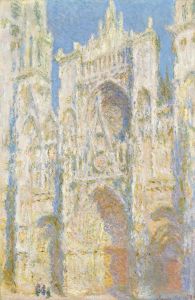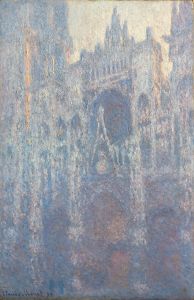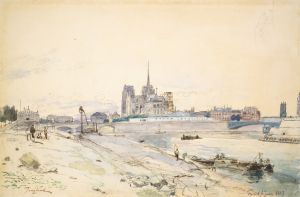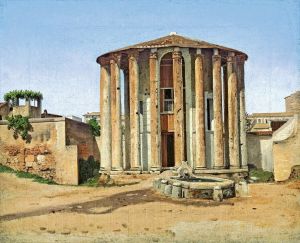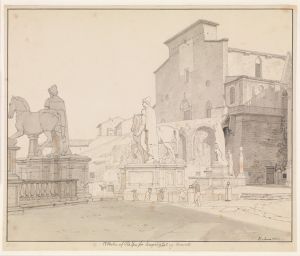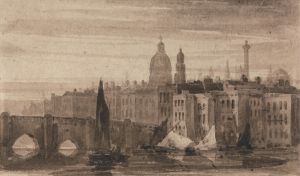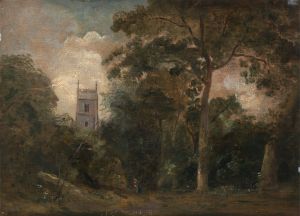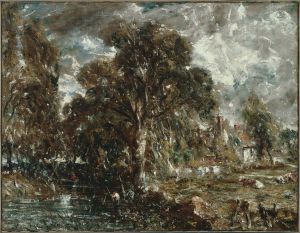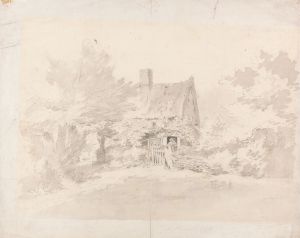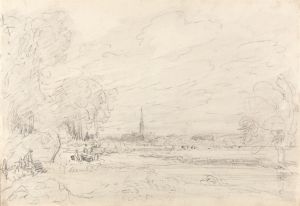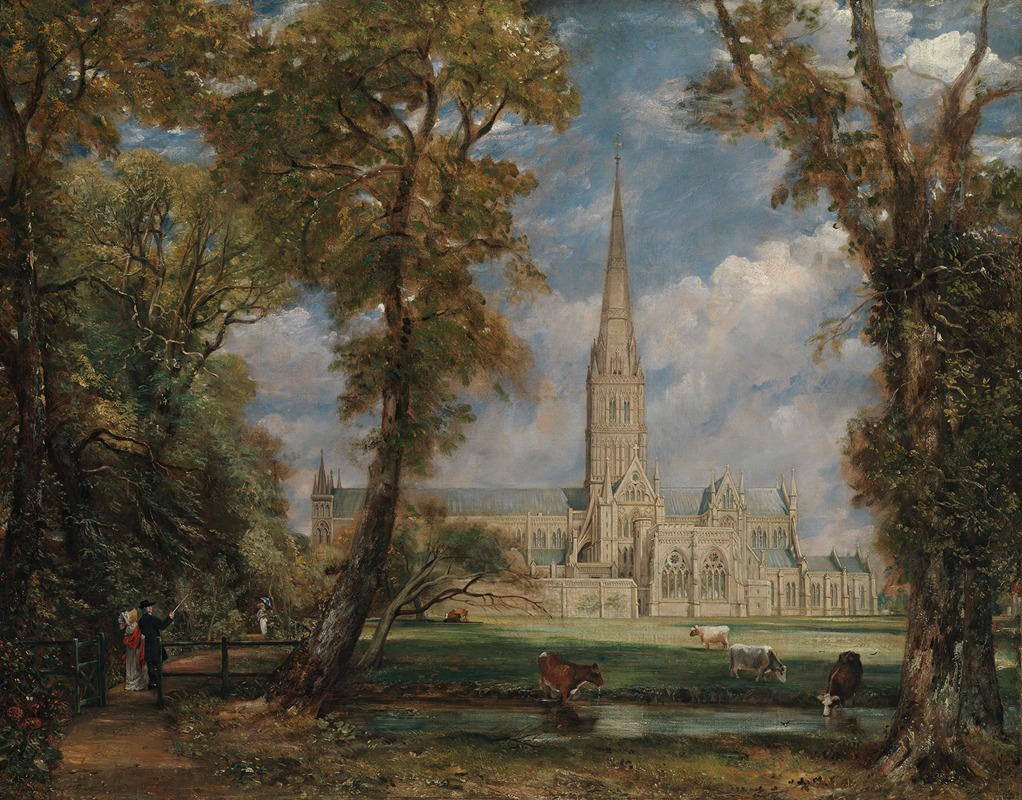
Salisbury Cathedral from the Bishop’s Grounds
A hand-painted replica of John Constable’s masterpiece Salisbury Cathedral from the Bishop’s Grounds, meticulously crafted by professional artists to capture the true essence of the original. Each piece is created with museum-quality canvas and rare mineral pigments, carefully painted by experienced artists with delicate brushstrokes and rich, layered colors to perfectly recreate the texture of the original artwork. Unlike machine-printed reproductions, this hand-painted version brings the painting to life, infused with the artist’s emotions and skill in every stroke. Whether for personal collection or home decoration, it instantly elevates the artistic atmosphere of any space.
"Salisbury Cathedral from the Bishop’s Grounds" is a celebrated painting by the renowned English Romantic painter John Constable. Created in 1823, this artwork is one of Constable's most famous depictions of the English countryside and showcases his exceptional ability to capture the natural beauty and atmospheric conditions of the landscape.
John Constable (1776-1837) was born in East Bergholt, Suffolk, and is best known for his landscape paintings of Dedham Vale, the area surrounding his home, which is now known as "Constable Country." His work is characterized by his use of natural light, detailed brushwork, and a deep appreciation for the English countryside.
The painting "Salisbury Cathedral from the Bishop’s Grounds" was commissioned by Constable's close friend, John Fisher, who was the Bishop of Salisbury. Fisher and Constable shared a deep appreciation for the natural world, and Fisher's support and patronage were instrumental in Constable's career. The painting depicts Salisbury Cathedral, an iconic example of Early English Gothic architecture, as seen from the bishop's garden.
In this work, Constable masterfully captures the cathedral's towering spire, which was the tallest in England at the time, rising majestically above the surrounding landscape. The composition is balanced by the inclusion of lush greenery, a meandering river, and a dramatic sky filled with billowing clouds. Constable's use of light and shadow adds depth and realism to the scene, creating a sense of tranquility and reverence for the natural world.
The painting is notable for its meticulous attention to detail and the artist's ability to convey the changing weather conditions. Constable was known for his practice of painting en plein air, or outdoors, which allowed him to observe and capture the transient effects of light and atmosphere. This approach is evident in "Salisbury Cathedral from the Bishop’s Grounds," where the interplay of sunlight and clouds creates a dynamic and lifelike representation of the scene.
"Salisbury Cathedral from the Bishop’s Grounds" is housed in the Victoria and Albert Museum in London, where it remains a highlight of the museum's collection. The painting is celebrated not only for its artistic merit but also for its historical significance, as it reflects Constable's deep connection to the English landscape and his innovative approach to landscape painting.
Constable's work had a profound influence on the development of landscape painting in the 19th century, and his techniques and themes were later adopted by the Barbizon School and the Impressionists. His dedication to capturing the natural world with honesty and sensitivity continues to inspire artists and art lovers alike.
In summary, "Salisbury Cathedral from the Bishop’s Grounds" is a quintessential example of John Constable's mastery of landscape painting. It embodies his ability to depict the beauty and complexity of the natural world, and it stands as a testament to his enduring legacy in the history of art.





